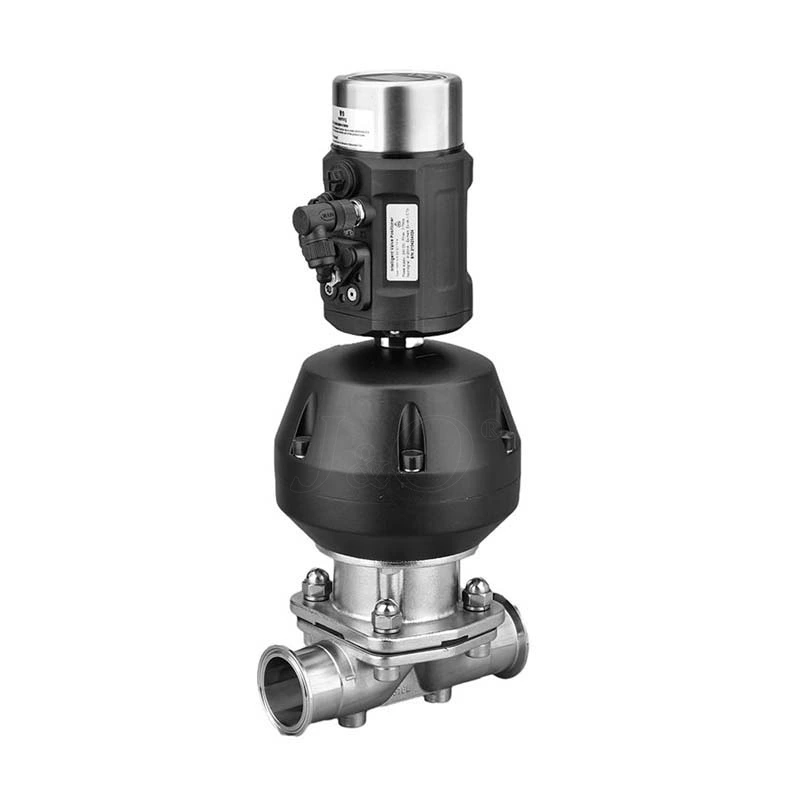Selection Of Diaphragm Valve Type
Sanitary Diaphragm Valve Type Selection
The selection of valve body is the most important part in the selection of diaphragm valve. There are many types of diaphragm valve bodies, and the commonly used ones are straight-through single seat, straight-through double seat, angle, diaphragm, small flow, three-way, eccentric rotation, butterfly, sleeve, ball and other 10 types. Before selecting a valve, it is necessary to carefully analyze the medium, process conditions and parameters of the control process, collect sufficient data, understand the system's requirements for diaphragm valves, and determine the type of valve to be used based on the collected data. When making a specific selection, the following aspects can be considered:
(1) The shape and structure of the valve core are mainly based on the selected flow characteristics and unbalanced force and other factors.
(2) Wear resistance When the fluid medium is a suspension containing a high concentration of abrasive particles, the joint surface of the valve core and the valve seat will be severely rubbed every time it is closed. Therefore, the flow path of the valve should be smooth and the internal material of the valve should be hard.
(3) Corrosion resistance Because the medium is corrosive, try to choose a valve with a simple structure if it can meet the adjustment function.
(4) Medium temperature and pressure When the medium temperature and pressure are high and vary greatly, valves with valve core and valve seat materials that are less affected by temperature and pressure changes should be selected.
(5) Prevent flashing and cavitation Flashing and cavitation only occur in liquid media. In the actual production process, flashing and cavitation not only affect the calculation of the flow coefficient, but also form vibration and noise, shortening the service life of the valve. Therefore, when selecting a valve, the valve should be prevented from flashing and cavitation.
No matter what type of actuator, its output force is the effective force used to overcome the load (mainly refers to the unbalanced force and unbalanced torque plus the friction force, sealing force, gravity and other related forces). Therefore, in order for the diaphragm pump to work normally, the actuator used must be able to generate sufficient output force to overcome various resistances and ensure high sealing and valve opening. For double-acting pneumatic, hydraulic, and electric actuators, there is generally no return spring. The magnitude of the force has nothing to do with its running direction. Therefore, the key to selecting an actuator is to find out the maximum output force and the torque of the motor. For single-acting pneumatic actuators, the output force is related to the valve opening, and the force on the diaphragm valve will also affect the motion characteristics, so it is required to establish a force balance in the entire diaphragm valve opening range.
After the output force of the actuator is determined, the corresponding actuator is selected according to the process use environment requirements. When there is an explosion-proof requirement on site, a pneumatic actuator should be selected, and the junction box is explosion-proof, and an electric actuator cannot be selected. If there is no explosion-proof requirement, both pneumatic and electric actuators can be selected, but from the perspective of energy saving, electric actuators should be selected as much as possible. For hydraulic actuators, their use is not as extensive as pneumatic and electric actuators, but they have the characteristics of high adjustment accuracy, fast and stable action speed. Therefore, in some cases, in order to achieve a better adjustment effect, hydraulic actuators must be selected, such as speed adjustment of transparent machines in power plants, temperature adjustment control of catalytic device reactors in refineries, etc.
Selection of action mode
The action mode of the direct-flow rubber-lined diaphragm valve is only available when a pneumatic actuator is selected, and its action mode is formed by the combination of the positive and negative actions of the actuator and the positive and negative actions of the valve. There are 4 combinations, namely positive positive (air closed), positive negative (air open), negative (air open), and negative negative (air closed). The diaphragm valves formed by these four combinations have two modes of action: air open and air closed. The selection of the diaphragm valve mode of action is mainly considered from three aspects: a) process production safety; b) characteristics of the medium; c) ensuring product quality and minimizing economic losses.
